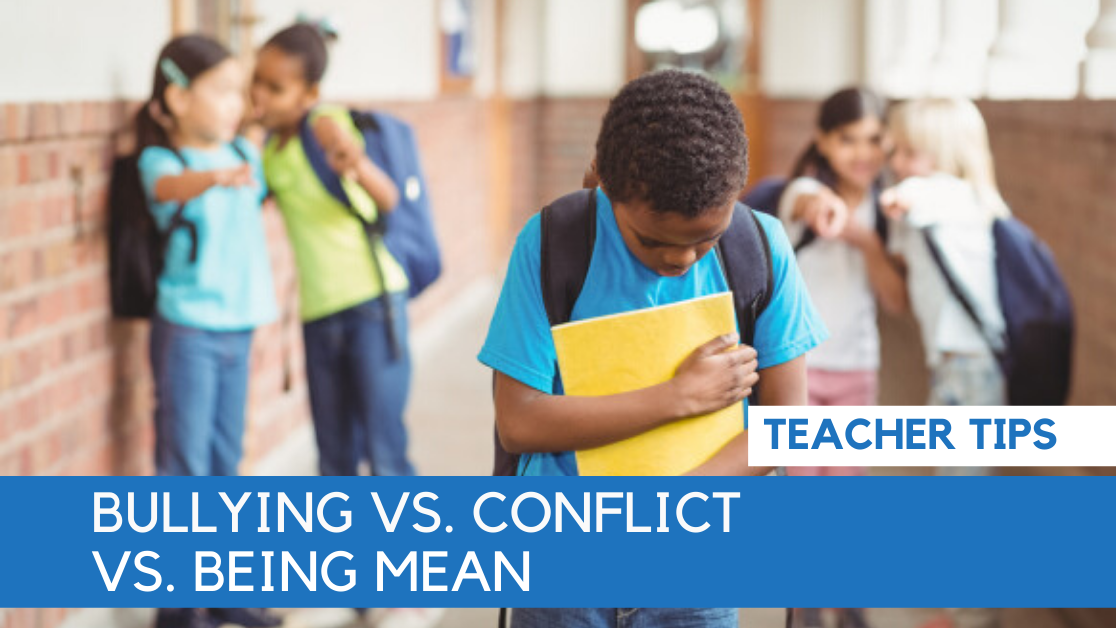Anyone in a relationship, or even in contact, with another person will probably at some stage experience conflict. For example, one friend might want to play video games; the other might want to go outside. One friend thinks he should be the goalie in a soccer game; the other feels that she is the one who should be the goalie. Conflict is a normal part of life. Bullying, however, is different from conflict. Bullying is done with a goal to hurt, harm, or humiliate. With bullying, there is often a power imbalance between those involved, with power defined as elevated social status, being physically larger, or as part of a group against an individual. Then, to make things more confusing, it can also be said that all bullying is mean, but not all mean behaviour is bullying. Children can be mean to each other. They can be rude, and they can be unfriendly. Know that your child will most definitely be the recipient of one or more mean comments or actions at some point during his school years, but unless it is ongoing, repeated intimidation or meanness directed at your child, it is not bullying.
So how does one tell the difference? Bullying scenarios might look like this: Someone convinces a group to tease another student based on their looks; someone threatens to beat a person up because of how they talk; somebody posts something untrue and hurtful online about someone else; or someone trips a classmate and makes everyone laugh at the person falling down. Oftentimes, behaviours labelled as bullying are better defined as socially-concerning situations that need support. Rude behaviour (based on thoughtlessness or manners forgotten in the moment but not meant to hurt someone) or mean behaviour (intentionally hurting someone’s feelings once or twice and usually motivated by angry feelings or low self-esteem) can often be resolved with careful, active support from educators and parents.
When children are in confusing situations that involve conflict and
invariably, hurt feelings and tears, it can be very difficult for parents. The
following questions might guide you in figuring out if the situation should be
classified as bullying or not –
- Are the children involved equals in the situation?
- Does your child feel victimized or targeted by an individual or a group?
- Does your child feel safe?
- Does your child feel that the person or group has intentionally hurt or humiliated him/her?
- Is the situation one that occurs regularly?
Reference:
Rigby, K. (2008). Children and bullying: How parents and educators can reduce bullying at school. Malden: Blackwell Publishing.
Lauren Brown is a Student Development/Cognitive Development Specialist from Cape Town, South Africa.
This article originally occurred in the Teacha! Magazine, take a look at the magazine here.



